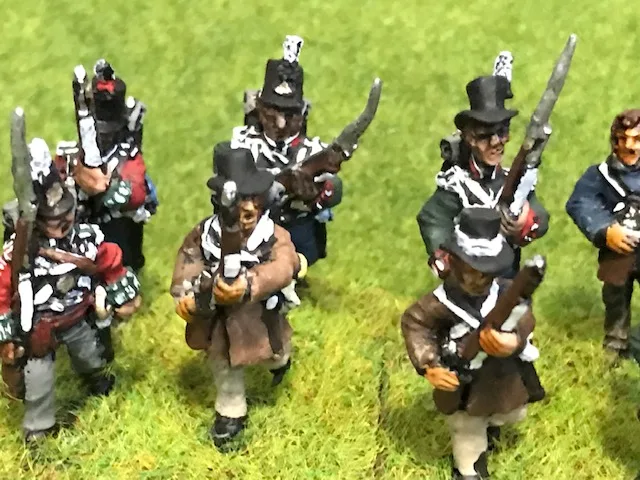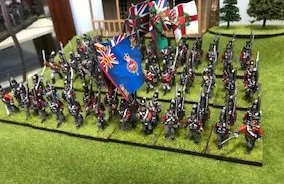Lt. Col. Joseph Morrison 's 3rd Brigade is made up of the 1st, 89th and 100th Regiments of Foot. In addition here are the massed flank companies (Light and Grenadier companies) formed into a composite battalion. Morrison was the British commander at the Battle of Crysler's Farm in 1814.
My British army for the Niagara 1814 army is based on the Order of Battle for Lundy's Lane. But since each brigade was made up of detachment or portions of regiments I have combined detachment to create full regiments to make them more player friendly. In addition I have switched out some regiments (103rd) for one of my favorite regiments (41st).
Light Infantry and Grenadier companies combined into a battalion. I often split this into two commands to beef up the 1st and 3rd brigades.
Combined flank companies to the front with the 100th Regiment of Foot behind. Note that all battalions in this brigade are wearing the belgic shako.
As is usual Regimental colors are from Flags of War while miniatures are from Knuckleduster.




















































